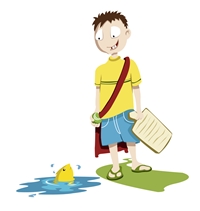 It does not exactly sound like rocket science, yet most writers shirk away from writing product descriptions. While it can get monotonous after a few tries, keeping the description exciting is crucial. How then do you get to writing descriptions that grab the reader’s attention time and time again? Read on.
It does not exactly sound like rocket science, yet most writers shirk away from writing product descriptions. While it can get monotonous after a few tries, keeping the description exciting is crucial. How then do you get to writing descriptions that grab the reader’s attention time and time again? Read on.
The science
The basics of a run-of-the-mill description can be broken up into individual pieces. The pieces are:
Manufacturer product description – Look online there is bound to be a set description (albeit bland) for the product in question. This description is usually provided by the manufacturer. This, however cannot be the only description that you will submit. The manufacturer content nonetheless is important as it will form the basis for your understanding of the product. This basic description in other words is the foundation on which you will build your view of the product. The product specifications are usually included in the manufacturer description.
Unique product description – Once you have dealt with the specs and the bland portion, this next part is where your creativity and individuality come into play. Being informative while being interesting enough to capture imaginations is the core of writing a unique description.
It is in writing the unique descriptions that most writers find themselves stuck in a quagmire of repetition. Simply describing the product has never sold it. The whole point of a product description as has already been established is to sell it. Talking about what the consumers already know is not going to create or enhance the business. Fortunately there are fool-proof simple means to getting the consumers attention.
Focus on the consumer
The equation is simple, products need to be sold. Not all products are universal. In fact, most products have a specific target audience, or people who the manufacturers think will buy the products. It is to this target audience that your work has to appeal to. [pullquote]But if you were to focus on a crowd of buyers, or think of these buyers in abstract terms, your description will fail to strike a chord with the audience. The best way to circumvent the abstract nature of descriptions is to address your buyer directly. [/pullquote]Think about the typical, average buyer. What kind of humor would she appreciate? What kind of a void would the product fulfill? For example if you were to write about a faux leather handbag, your target audience will be the environment conscious, animal friendly, business woman who has a sense of style. Talking about the numerous compartments that can hold everything from lunch to wallet to makeup is going to let your reader know that the bag is made to carry a lot of weight efficiently while also looking stylish and avant garde. Bringing a touch of classic humor would be appreciated while crass words like sucky, crappy or cool would not resonate with your reader. A simple tip is to apply the same language you would use in a face-to-face conversation with your reader.
What’s new?
Most products are already available in the market and the consumers know what they are looking for. Why then would anybody read your description? Product descriptions are a sort of re-packaging of the product. Your written word will spread bright, new light on the product for the consumer.
Highlighting the benefits of using a product will push it into a market niche. For example, if you were to describe a hand soap, there is only so much that you can write about the germ fighting capabilities and the doctor approvals for sensitive skin. What more does the soap do? If the fragrance of the soap is reminiscent of Christmas, highlight that aspect. Talk about enjoying the holiday spirit while staying healthy.
The extra benefits of the product is potentially the only factor that will trump competition and create a niche for the object. Think about what else the product can bring to the consumer. Will it bring a measure of happiness, health or productivity to their lives? Create an experience through the few words that you put out there.
Appealing to the intelligent consumer
Excellent quality, top seller, neat, nice and other such clichés should definitely be avoided. The average consumer before reading your description already has a sense of their requirements and the product itself. Promising top quality or talking about the obvious is not going to get you any brownie points.
For example instead of talking about the quality of a shoe, highlight the hand sewn detailing, the durable comfort, the robust eyelets, the water resistant leather upper and the rubber outsole that provides good traction. Detailing the work that goes into creating the shoe is a sure-fire way to catch the reader’s attention. This way you can point to the quality subtly.
Credibility
Credibility is a major criteria creating a winning product description. The accuracy of your details is crucial as it translates into a happy customer which also means more business transactions. The rule here too is simple, credible details help sell products. Details presented in an interesting fashion help sell faster.
Justify your praise
If a product description claims that the product is the best in a particular category, justification will add credibility. If you fail to back up your claims for the product, the description will sound insincere.
Words like patented and percentages give authority to a description. A cell phone battery that last 25 % longer than others in the same category is a fact that will back your claim of the phone being best in class.
If such verifications are not handy or the product does not lend itself to percentages, then include quotes from current, happy and satisfied customers. No publicity like word of mouth publicity.
Creating the product
Put yourself in the shoes of the consumer. What would make you want to buy something? For most people experiencing the product first hand and touching it is more persuasive than ads and words.
While pictures and videos are helpful, words are equally powerful. Make the reader imagine using the product. Create a scenario where the product will make life better.
For example if you were to talk about shoes, saying, “These classic pumps will give you the confidence to step in to a party straight from work effortlessly.” Invoke the reader’s imagination and you will definitely see more sales.
Reality
Accessibility and personification is important in creating a brand. Imagine a brand called X cupcakes. If you were to talk about the scrumptious bakes, the smells and the creative displays, you will probably get a customer to walk through the door.
Picture instead, a stay-at-home mother who loved baking. With the kids in school, she chose to pursue her passion and opened her doors to hungry customers looking for a mini treat in the form of a cupcake. Your description will make the person and the business seem accessible. It will create a warmth that just does not come with impersonal chain stores and halfhearted descriptions.
Seduce with words
Ever wonder why some ads will just make you crave for something? The use of sensory words is probably the culprit. En route to making your reader feel the product, it is crucial to paint a picture with words.
Words like smooth, velvety, crunchy and bright paint a vivid picture. Your words will be the bridge that will enable your reader feel what you are feeling.
The social world
With SEO and social media optimization becoming keywords in creating content, lacing your description with social media proof will give you an edge. The business world is driven by reviews and feedback.
Consumers are most likely going to look for online reviews before making purchases. Including snippets of customer feedback or newspaper articles is going to boost your description. The proof attests the popularity and popularity attracts more purchases.
Highlight and use bullet points
Last but never the least important point is the presentation of the description. If the description is presented as a block of text with no highlight or refrain from text, it will not invite readers in. Given the infamous attention span and notorious surfing abilities of readers, you will want them to stay and get the most important pieces of information in the least.
Use a lot of white spaces when writing. Bullet points and different, bold fonts for important points will make it easy to read and grasp. Where possible you might even want to increase your font size to make the print more reader-friendly.
These simple rules later, you will definitely be able to tackle product descriptions head on without even batting an eyelid. How did you tame the product description beast? Let us know how you get through writing fabulous descriptions in the comments. Happy writing times to you!





